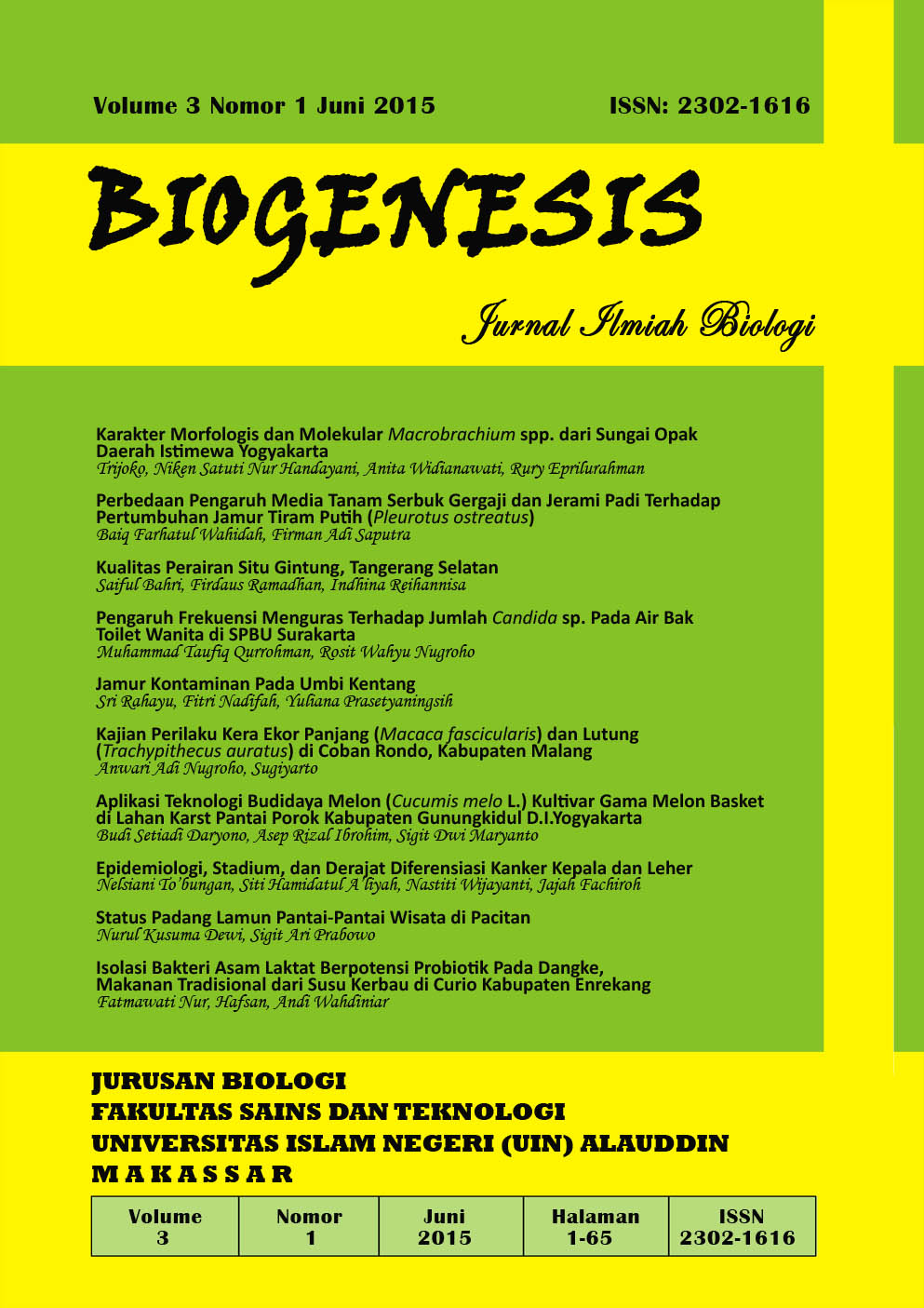Status Padang Lamun Pantai-Pantai Wisata di Pacitan
Abstrak
The purpose of this research was to study the condition of seagrass communities at Pacitan coast. The study was conducted at Klayar, Srau, Teleng Ria, Pancer, Tawang, and Pidakan at Pacitan coast. The presence of seagrass communities was determined by the physical and chemical factors. Data were collected using quadrate plots with five transects. At each transect, data was collected using the quadrate plot, 0.5 m x 0.5 m, with 11 replications. On each plot, number of species, density, and their coverage were measured. Water quality such as light penetration, water level, current velocity, salinity, temperature, wave height, DO, pH, sediment texture, and nutrients of NH4, NO3, PO4, C-organic were also measured. The results showed, from 6 beaches studied, seagrass is only found in Tawang and Pidakan. There were 3 species of seagrass in Tawang beach, i. e Cymodocea serrulata, Thalassia hemprichii, and Halophila ovalis which were distributed unevenly, with 37,66 % coverage. In Pidakan beach, there is 1 species of seagrass, Thalassia hemprichii, with 30,89 % coverage. These variations were due to the physical and chemical factors in each location. T. hemprichii was the seagrass species which was tolerant to changes in environmental conditions. Light and substrate were as important factors that determined the presence and abundance of seagrass communities in Pacitan coastal waters.
Keywords: coverage, light, seagrass, substrate, tolerant species
##submission.copyrightStatement##
##submission.license.cc.by4.footer##COPYRIGHT AND LICENSE STATEMENT
COPYRIGHT
Biogenesis: Jurnal Ilmiah Biologi is published under the terms of the Creative Commons Attribution license. Authors hold the copyright and retain publishing rights without restriction to their work. Users may read, download, copy, distribute, and print the work in any medium, provided the original work is properly cited.
LICENSE TO PUBLISH
1. License
The use of the article will be governed by the Creative Commons Attribution license as currently displayed on http://creativecommons.org/licenses/by/4.0.
2. Author’s Warranties
The author warrants that the article is original, written by stated author/s, has not been published before, contains no unlawful statements, does not infringe the rights of others, is subject to copyright that is vested exclusively in the author and free of any third party rights, and that any necessary written permissions to quote from other sources have been obtained by the author(s).
3. User Rights
Under the Creative Commons Attribution license, the users are free to download, reuse, reprint, modify, distribute and/or copy the content for any purpose, even commercially, as long as the original authors and source are cited. No permission is required from the authors or the publishers.
4. Co-Authorship
If the article was prepared jointly with other authors, the corresponding author warrants that he/she has been authorized by all co-authors, and agrees to inform his/her co-authors of the terms of this statement.
5. Miscellaneous
Biogenesis: Jurnal Ilmiah Biologi may conform the article to a style of punctuation, spelling, capitalization, and usage that it deems appropriate. The author acknowledges that the article may be published so that it will be publicly accessible and such access will be free of charge for the readers.


